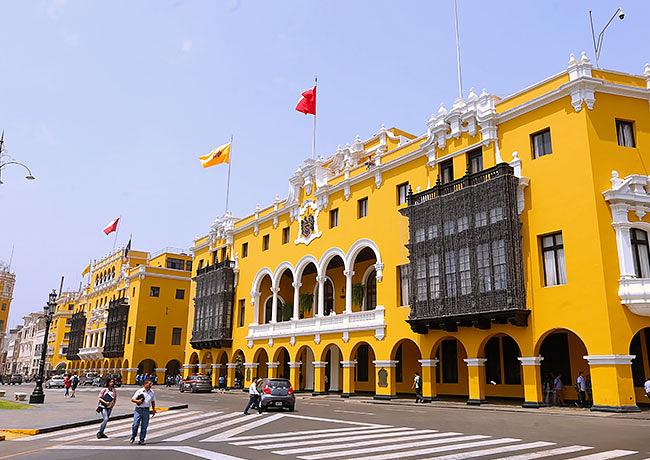Nacional
Make Big Profit with Futures Trading Algorithms

Introduction
In today’s fast-paced world, futures trading has become an increasingly popular way to invest money. Futures trading is the buying and selling of contracts that promise to deliver a particular commodity or financial instrument at a predetermined future date. We will explain you in this article how Futures Trading Algorithms can help you making profit.
Definition of futures trading
Futures trading is a type of investment in which traders buy or sell futures contracts that obligate them to buy or sell a specific commodity or financial instrument at a predetermined price and date in the future. Futures contracts are standardized agreements that trade on organized exchanges.
Explanation of how algorithms are used in futures trading:
Algorithms are used in futures trading to help traders make better decisions about when to buy or sell futures contracts. These algorithms are designed to analyze market data, identify trends and patterns, and execute trades based on predefined rules. This allows traders to take advantage of market movements more quickly and efficiently.
Purpose of the article:
The purpose of this article is to provide an overview of futures trading and explain how algorithms are used in this type of investment. By understanding these concepts, readers can make more informed decisions about their investments and potentially increase their chances of success in the futures market.
What Are Futures Trading Algorithms?
Definition of algorithms
Futures trading algorithms are computer programs used to execute trades in financial futures markets. These algorithms use predefined rules and mathematical models to analyze market data and make trading decisions.
How algorithms work in futures trading
Algorithms are sets of instructions that tell a computer what to do. In futures trading, algorithms are used to automate the process of analyzing market data and making trading decisions. They can process vast amounts of information quickly and make trades in fractions of a second, which can be essential in fast-moving markets.
Types of algorithms used in futures trading
There are several types of algorithms used in futures trading, including trend-following algorithms, mean reversion algorithms, and high-frequency trading algorithms. Trend-following algorithms identify market trends and make trades based on those trends. Mean reversion algorithms look for opportunities to profit from temporary market imbalances. High-frequency trading algorithms use complex mathematical models to execute trades at lightning-fast speeds.
Trend-following algorithms
Trend-following algorithms are one of the most popular types of algorithms used in futures trading. These algorithms look for trends in market data and make trades based on those trends. For example, if the algorithm identifies an upward trend in the price of crude oil futures, it may initiate a long position in crude oil futures to profit from that trend.
Mean reversion algorithms
Mean reversion algorithms are another popular type of algorithm used in futures trading. These algorithms look for opportunities to profit from temporary market imbalances. For example, if the algorithm identifies a situation where the price of a futures contract is significantly higher or lower than its historical average, it may initiate a trade to take advantage of that imbalance.
High-frequency trading algorithms
High-frequency trading algorithms are a type of algorithm that uses complex mathematical models to execute trades at very high speeds. These algorithms can analyze market data and execute trades in fractions of a second, which can be essential in fast-moving markets. High-frequency trading algorithms are often used by large financial institutions to take advantage of small price movements in futures markets.
Conclusion – What Are Futures Trading Algorithms?
In conclusion, futures trading algorithms are computer programs used to automate the process of analyzing market data and making trading decisions in financial futures markets. There are several types of algorithms used in futures trading, including trend-following algorithms, mean reversion algorithms, and high-frequency trading algorithms. These algorithms can process vast amounts of information quickly and make trades in fractions of a second, which can be essential in fast-moving markets.
Benefits of Futures Trading Algorithms
Increased efficiency and speed of trading
Futures trading algorithms offer several benefits to traders, including increased efficiency and speed of trading. By using these algorithms, traders can automate their trading strategies, reducing the time required for manual trading. This can result in faster execution of trades, providing traders with a competitive advantage in the market.
Improved accuracy of trading decisions
Moreover, futures trading algorithms can improve the accuracy of trading decisions. They can analyze market data and identify patterns and trends that are difficult for human traders to recognize. This can lead to more informed trading decisions, increasing the chances of profitable trades and reducing the risk of losses.
Reduction of emotional trading
One of the most significant benefits of futures trading algorithms is the reduction of emotional trading. Human traders can be influenced by emotions such as fear, greed, or excitement, leading to irrational trading decisions. Algorithms, on the other hand, are programmed to follow a specific strategy and are not affected by emotions. This can lead to more consistent and disciplined trading, which is essential for long-term success in the futures market.
Conclusion – Benefits of Futures Trading Algorithms
In conclusion, the use of futures trading algorithms provides several benefits to traders, including increased efficiency and speed of trading, improved accuracy of trading decisions, and the reduction of emotional trading. By utilizing these algorithms, traders can gain a competitive advantage in the market and achieve greater success in their trading activities.
Common Challenges with Futures Trading Algorithms
Futures trading algorithms can face several challenges that traders should be aware of. Here are three of the most common challenges:
- Over-optimization: While optimizing a futures trading algorithm can improve its performance, over-optimization can lead to problems. Over-optimization refers to tweaking an algorithm so much that it works perfectly on past data, but not on future data. To avoid this, traders should use a variety of data sources, use different parameters, and avoid curve fitting.
- High-frequency trading: High-frequency trading algorithms are designed to execute trades at lightning-fast speeds. However, this can lead to challenges such as increased risk due to the high volume of trades and the potential for the algorithm to malfunction.
- Black swan events: Black swan events are unpredictable events that have a significant impact on the market. These events can cause volatility and disrupt futures trading algorithms. To minimize the impact of black swan events, traders should diversify their portfolios and consider implementing risk management strategies such as stop-loss orders.
In summary, traders should be aware of these common challenges and take steps to mitigate their impact. By avoiding over-optimization, being mindful of the risks associated with high-frequency trading, and preparing for black swan events, traders can increase their chances of success in futures trading.
Key Factors to Consider When Choosing Futures Trading Algorithms
When it comes to choosing futures trading algorithms, several key factors must be considered. Here are three critical aspects to consider:
1. Performance Metrics:
Before selecting any trading algorithm, it is essential to evaluate its performance metrics. Look at how the algorithm performs in different market conditions and time frames. Pay attention to key metrics such as the algorithm’s Sharpe ratio, maximum drawdown, and overall profitability. It is also important to assess the algorithm’s speed and latency to ensure it can execute trades quickly and efficiently.
2. Risk Management:
Another critical factor to consider when selecting a futures trading algorithm is risk management. The algorithm must have a robust risk management strategy that can help minimize losses and preserve capital. Look for algorithms that use stop-loss orders, position sizing, and other risk management techniques to ensure they can handle potential market volatility and minimize downside risks.
3. Compatibility with Trading Strategies:
The third key factor to consider is the algorithm’s compatibility with your trading strategy. It is crucial to select an algorithm that aligns with your investment goals and trading style. Look for algorithms that are flexible and can be customized to suit your specific needs. Consider the algorithm’s trading frequency, holding periods, and the type of assets it trades to ensure it is suitable for your investment objectives.
In conclusion, when choosing futures trading algorithms, performance metrics, risk management, and compatibility with trading strategies are critical factors to consider. By carefully evaluating these factors, you can select an algorithm that aligns with your investment goals and helps you achieve your desired returns.
Examples of Successful Futures Trading Algorithms
Successful futures trading algorithms are those that can predict market movements accurately and make profitable trades. There are different types of trading algorithms, and each uses a different approach to analyze the market.
Trend-following algorithms
One popular type of futures trading algorithm is the trend-following algorithm. This algorithm identifies trends in the market and takes positions accordingly. When a market is trending upwards, the algorithm will buy, and when it’s trending downwards, it will sell. This strategy works well in markets that are in a strong trend, but it can struggle in sideways markets.
Mean reversion algorithms
Another type of futures trading algorithm is the mean reversion algorithm. This algorithm assumes that markets tend to revert to their mean, and takes positions based on this assumption. It looks for situations where the market has deviated significantly from its mean and takes a position in the opposite direction. This strategy works well in markets that are range-bound or experience mean reversion.
Volatility breakout algorithms
Finally, there are volatility breakout algorithms. These algorithms take positions based on sudden price movements caused by increased volatility. They identify markets that are trading within a range and wait for a sudden breakout in either direction. When a breakout occurs, the algorithm takes a position in the direction of the breakout. This strategy works well in markets that are prone to sudden and sharp price movements.
In conclusion, successful futures trading algorithms are those that can accurately predict market movements and take positions accordingly. There are different types of algorithms, each with their strengths and weaknesses. Trend-following algorithms work well in trending markets, mean reversion algorithms work well in range-bound markets, and volatility breakout algorithms work well in markets prone to sudden price movements.
Conclusion
In conclusion, futures trading algorithms have become an essential tool for traders looking to achieve success in the futures market. These algorithms provide traders with the ability to execute trades quickly and efficiently while reducing their overall risk.
Importance of Futures Trading Algorithms
Futures trading algorithms offer several benefits to traders, including increased speed and efficiency, reduced risk, and the ability to make informed trading decisions. These algorithms use complex mathematical formulas and historical data to analyze market trends and make trading decisions based on that analysis.
Recommendations for Selecting and Using Algorithms
When selecting a futures trading algorithm, it’s essential to consider several factors, including the algorithm’s performance, cost, and ease of use. Traders should also ensure that the algorithm they choose is compatible with their trading style and goals.
Once a trader has selected an algorithm, they should use it in conjunction with their own analysis and trading strategies. It’s essential to monitor the algorithm’s performance regularly and make adjustments as necessary.
Future Trends in Futures Trading Algorithms
As technology continues to advance, the future of futures trading algorithms looks promising. Artificial intelligence and machine learning are already being used to improve algorithm performance, and it’s likely that these technologies will continue to play a significant role in the development of new and improved algorithms.
Additionally, we can expect to see increased integration of algorithms with other technologies, such as blockchain and cloud computing, which will further enhance their speed and efficiency. Finally, as the use of algorithms becomes more widespread, we can expect to see increased regulation and oversight to ensure fair and ethical trading practices.
Actualidad
Encuesta CPI: Allison, Bruce y Reggiardo lideran; Arón Espinoza da la sorpresa

Un nuevo estudio de opinión revela las preferencias iniciales para la alcaldía de Lima Metropolitana. Más de un 40% aún no decide su voto.
La última encuesta de CPI, publicada por El Comercio, traza un primer mapa de preferencias con miras a las elecciones municipales de 2026 en Lima Metropolitana. Si bien las cifras reflejan una competencia aún abierta, ya empiezan a perfilarse nombres, narrativas y contrastes que vale la pena analizar.
En el primer lugar aparece Francis Allison, actual alcalde de Magdalena del Mar y precandidato por Avanza País, con un 12.46%. Aunque lidera el sondeo, su falta de carisma, tono frío y aparente apatía frente a los grandes temas de ciudad le restan fuerza más allá de su base. Lima es más que Magdalena, y los retos metropolitanos exigen otra energía.
Le siguen Carlos “Techito” Bruce (10.86%), alcalde de Surco, figura experimentada pero sin mayor arrastre en sectores populares; y Renzo Reggiardo (también con 10.86%), actual teniente alcalde de Lima, quien intenta revitalizar su imagen a través del espacio televisivo Alto al Crimen y una narrativa de orden que remite inevitablemente a su pasado fujimorista. Reggiardo, sin embargo, ha sido el que más creció desde abril, lo que revela que aún conserva una base reactiva y atenta.
En cuarta posición aparece Sofía Franco (7.51%), figura televisiva que hoy es más recordada por los constantes escándalos y conflictos maritales con su aún esposo, Álvaro Paz de la Barra, que por alguna propuesta política seria. Su alta recordación podría jugarle tanto a favor como en contra en los próximos meses.
Pero el dato más interesante lo ofrece el quinto lugar. Con un 5.11%, el excongresista Arón Espinoza se posiciona como la sorpresa del sondeo. Sin un apellido de alcurnia, ni pantalla propia, ni gestión distrital en su historial, Espinoza ha logrado conectar con sectores populares como Ate, Carabayllo, Chorrillos y Villa El Salvador. Su reciente designación como responsable político de Lima Metropolitana por parte de Podemos Perú confirma que su agrupación lo proyecta con ambición, y que la calle sigue siendo el mejor termómetro para captar el humor social.
Más abajo en la tabla aparecen otros aspirantes con menor tracción:
▪️ Ulises Villegas (4.95%), alcalde de Comas, con visibilidad distrital pero aún sin proyección metropolitana.
▪️ Alberto Tejada (2.88%), médico y alcalde de San Borja, cuya imagen técnica parece no despertar entusiasmo fuera de su nicho.
▪️ Jorge Quintana (0.80%), exalcalde de Jesús María, marcado por una gestión cuestionada.
▪️ Luis Gálvez y Yorry Warthon, ambos con apenas 0.32%, sin presencia reconocible para el gran electorado.
Pero la cifra más contundente sigue siendo la de los indecisos: 41.53% de los encuestados aún no sabe o no opina. Esto evidencia que, a pesar de las movidas y precandidaturas, Lima aún no encuentra una figura que capture la confianza ciudadana con claridad.
El reto no es solo ganar encuestas. Es construir liderazgo, representar a una ciudad desigual y exigente, y demostrar que se puede gobernar más allá del nombre, el cargo o el show.
Lima observa. Y aunque aún no decide, ya empieza a filtrar.
Nacional
Quince mil escolares chalacos beneficiados con las Escuelas Deportivas Regionales – Diario La Noticia Perú

El programa diseñado por la Oficina de Deporte y Recreación (ODyR) del Gobierno Regional del Callao en el presente año involucra Escuelas Deportivas Regionales y Activaciones Escolares que a la fecha nos revela cifras tonificantes y halagadoras, por la sugerente participación de nuestra niñez, juventud y personas mayores.
En tal sentido nos remitimos a las estadísticas que nos orientan sin mirar colores y tendencias, y vemos que se ha avanzado hacia mejores objetivos, haciendo partícipe cada vez a más población en todos los rincones del Primer Puerto de la República en losas deportivas, parques, clubes, asentamientos humanos, en La Perla, Bellavista, Ventanilla, Carmen de la Legua, Mi Perú, y Cercado del Callao.
En el rubro de Activaciones Escolares nuestras visitas se han desarrollado en IE de los niveles primaria, secundaria y técnica, llegando al Cercado del Callao, Mi Perú, Ventanilla, entre otros, generando una inmensa alegría en los alumnos por estar durante dos horas diarias en dinámicas motivadoras.
Es hora de compartir información y decir que hemos alcanzado un gratificante porcentaje de más del 90 por ciento en lo referente a Escuelas Deportivas Regionales, en las múltiples visitas de sus técnicos y asistentes, gozando a viva voz con la concurrencia de niños y jóvenes luego de sus horarios de clases escolares, sumándose ciudadanos mayores de igual manera.
Las actividades desarrolladas con entusiasmo participativo son el vóley, futsal, aeróbicos, yoga, ajedrez, básket, boxeo, fútbol 7, pickeball, alcanzando más de 15 mil chalacos beneficiados en tres meses de gestiones.
Esperamos continuar con esta noble tarea de responsabilidad social a cargo del GORE Callao sabiendo que es una obra a largo plazo y que no tiene fecha de caducidad.
Estamos en el camino correcto confirmando aquello de Bien Hecho, a la Chalaca y con Alegría.
-

 Especiales4 años ago
Especiales4 años agoOpinión: LA LIGA CONTRA MESSI
-

 Ciencia y Tecnología4 años ago
Ciencia y Tecnología4 años agoProcesadora peruana Torre Blanca impulsa exportación de fruta a países asiáticos
-

 Arte y Cultura3 años ago
Arte y Cultura3 años agoMinedu reconformará comisión organizadora de Universidad Nacional Autónoma de Tayacaja “Daniel Hernández Murillo”
-

 Ciencia y Tecnología4 años ago
Ciencia y Tecnología4 años agoAtenciones del Servicio de Publicidad Registral en Línea de la Sunarp crecieron en 122 %
-

 Ciencia y Tecnología4 años ago
Ciencia y Tecnología4 años agoDepsa lanza nuevo servicio Medical Box para el sector Salud
-

 Lima Norte2 años ago
Lima Norte2 años agoRumbo al GOTHIA CUP en Luxemburgo Suecia con su categoría sub 11 – Señal Alternativa
-

 Deportes2 años ago
Deportes2 años ago🔴#ENVIVO Cienciano vence 5-2 a Alianza Atlético en Cusco
-

 Noticias2 años ago
Noticias2 años agoMininter anuncia creación de nueva categoría en PNP
